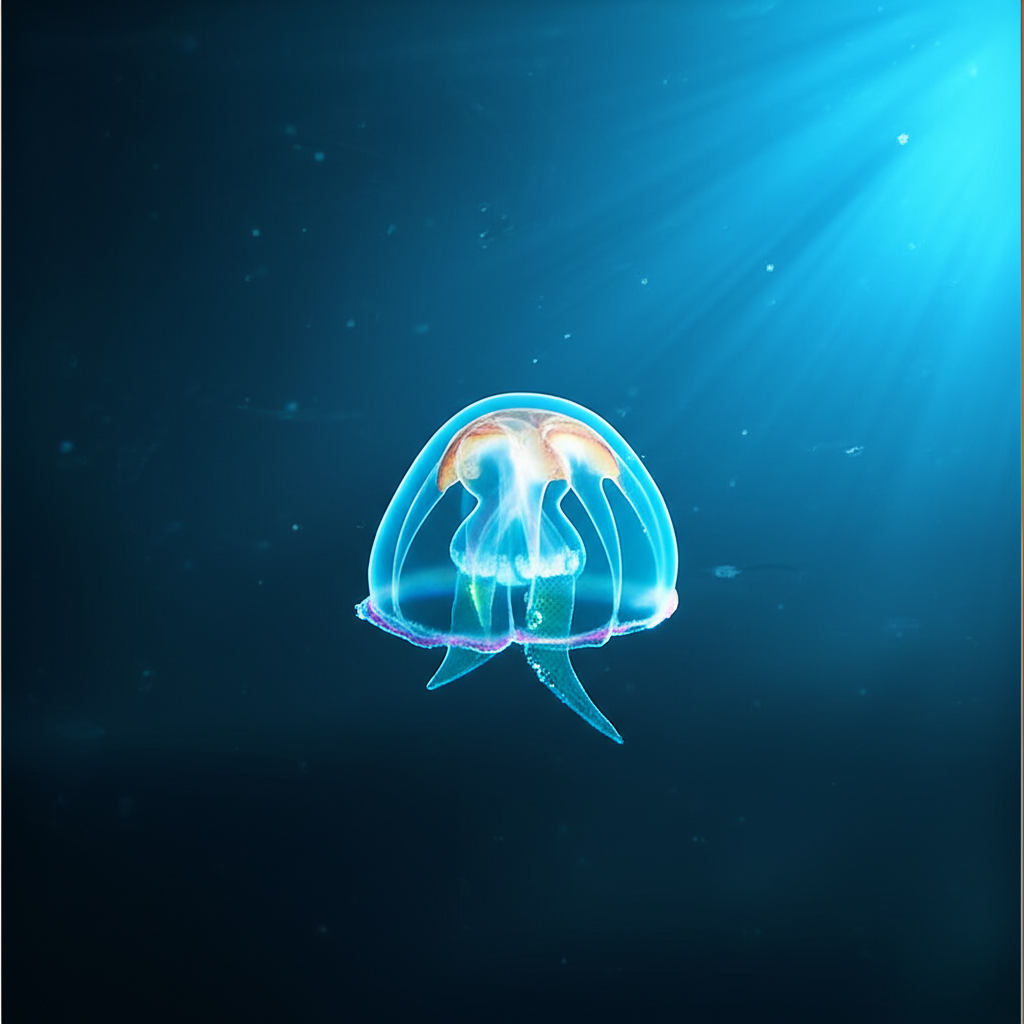The Biological Immortality of the Turritopsis dohrnii Jellyfish
The Turritopsis dohrnii jellyfish defies aging by reversing its life cycle through transdifferentiation, a process where its cells revert to their earliest form. This unique ability, a biological reset button, allows it to achieve potential immortality.

In the vast theater of the natural world, death is the inevitable final act for nearly every living thing. Yet, in the ocean's depths, a tiny creature, no larger than a pinky nail, performs an encore that defies this fundamental rule of biology. Meet Turritopsis dohrnii, the organism commonly known as the 'immortal jellyfish.' While the name might evoke images of an indestructible sea monster, the reality is a far more subtle and scientifically profound marvel.
An Unassuming Master of Rebirth
At first glance, Turritopsis dohrnii is unremarkable. It's a tiny, bell-shaped hydrozoan that drifts through temperate and tropical waters, indistinguishable from thousands of other jellyfish species. It lives a typical jellyfish life: starting as a stationary polyp on the seafloor, it eventually buds off into a free-swimming medusa—the classic jellyfish form we all recognize. It grows, reproduces, and, like all others, eventually faces the decline of old age, injury, or environmental stress. But this is where its story diverges from every other known animal on the planet.
The Science of Turning Back Time
When faced with mortal peril—be it starvation, physical damage, or the simple decay of its cells—Turritopsis dohrnii can initiate a stunning biological reversal. Instead of succumbing to death, it can revert its entire body back to its earliest stage of life, the polyp. It settles back onto the seafloor, its bell and tentacles retracting and being reabsorbed, its very cells transforming. This isn't just healing; it's a complete do-over.
The cellular mechanism behind this feat is a rare process called transdifferentiation. In most animals, a cell's fate is sealed once it specializes; a muscle cell will always be a muscle cell, and a nerve cell will always be a nerve cell. Transdifferentiation is the biological equivalent of a master architect deciding to turn a completed skyscraper back into a pile of raw steel and then using that steel to build a bridge. The jellyfish's specialized cells become unspecialized stem-cell-like cells, which can then differentiate again to form a new polyp. This new polyp is a genetic clone of the adult medusa, ready to begin the life cycle anew.
Immortality with an Asterisk
This remarkable ability has led to comparisons in popular culture to mythical creatures or science fiction icons. Some have described it as a real-life phoenix, rising from its own ashes. Others draw an analogy to the regenerating Time Lords of Doctor Who. While captivating, these comparisons come with a crucial caveat: the jellyfish is not invincible. It is still vulnerable to predation—if a fish or sea turtle eats it, its journey ends permanently. It can also succumb to diseases that destroy it too quickly for the reversal process to kick in. Its 'immortality' is potential, not absolute. It doesn't live forever; rather, it has the potential to never die of old age.
What Can We Learn from a Jellyfish?
The existence of Turritopsis dohrnii opens up fascinating avenues for scientific research, particularly in the fields of aging and regenerative medicine. By studying the genetic and molecular triggers of transdifferentiation, scientists hope to unlock secrets about how cells can be reprogrammed. Understanding this natural 'reset button' could one day provide insights into repairing damaged tissues or even treating age-related diseases in humans. For now, this tiny creature remains a powerful reminder that nature still holds mysteries that challenge our understanding of life and death itself.

 in
in